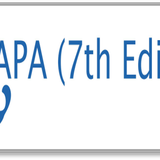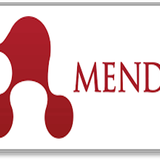Family Involvement With MD & A (Management Disclosure & Analysis) Readability Level
DOI:
https://doi.org/10.24912/ja.v24i1.642Abstract
This study aims to examine the relationship between family involvement and the readability level of the MD & A (Management Disclosure & Analysis) released by the company. This study uses 1795 final samples from firms listed on the Indonesia Stock Exchange in the period 2010-2018. We tested the research hypothesis using ordinary least square regression (OLS). This was done using the Stata software by adding a fixed effect for industry diversity in order to strengthen the study results. This study used two proxies of the family firm where there is the involvement of family members at the management level and related to the ownership of company shares. Both of these proxies show consistent results indicating that family firms tend to release less readable MD&As. Furthermore, the language differences were also tested in this study. Apart from the presentation of the MD&A in English or Indonesian, family firms still present reports with lower readability. This study provides a perspective to the authorities regarding the family firm's governance intended to help improve existing regulations.
References
Abernathy, J. L., Guo, F., Kubick, T. R., and Masli, A. (2019). Financial Statement Footnote Readability and Corporate Audit Outcomes. AUDITING: A Journal of Practice & Theory, 38(2), 1–26. doi:10.2308/ajpt-52243.
Binz, C., Hair, J. F., Pieper, T. M., and Baldauf, A. (2013). Exploring the effect of distinct family firm reputation on consumers’ preferences. Journal of Family Business Strategy, 4(1), 3–11. doi:10.1016/j.jfbs.2012.12.004.
Biswas, P. K., Roberts, H., and Whiting, R. H. (2019). The impact of family vs non-family governance contingencies on CSR reporting in Bangladesh. Management Decision, 57(10), 2758–2781. doi:10.1108/md-11-2017-1072.
Berrone, P., Cruz, C., Gomez-Mejia, L. R., and Larraza-Kintana, M. (2010). Socioemotional Wealth and Corporate Responses to Institutional Pressures: Do Family-Controlled Firms Pollute Less? Administrative Science Quarterly, 55(1), 82–113. doi:10.2189/asqu.2010.55.1.82.
Berrone, P., Cruz, C., and Gomez-Mejia, L. R. (2012). Socioemotional Wealth in Family Firms. Family Business Review, 25(3), 258–279. doi:10.1177/0894486511435355.
Boubaker, S., Gounopoulos, D., and Rjiba, H. (2019). Annual report readability and stock liquidity. Financial Markets, Institutions & Instruments, 28(2), 159–186. doi:10.1111/fmii.12110.
Brennan, N., Guillamon-Saorin, E., and Pierce, A. (2009). Impression management: Developing and illustrating a scheme of analysis for narrative disclosures – A methodological note. Accounting, Auditing and Accountability Journal, 22(5), 789–832. https://doi.org/10.2139/ssrn.1284904.
Cascino, S., Pugliese, A., Mussolino, D., and Sansone, C. (2010). The Influence of Family Ownership on the Quality of Accounting Information. Family Business Review, 23(3), 246–265. doi:10.1177/0894486510374302.
Chen, S., Chen, X. and Cheng, Q. (2008). Do Family Firms Provide More or Less Voluntary Disclosure? Journal of Accounting Research, 46(3), 499–536. doi:10.1111/j.1475679x.2008.00288.x.
Cheng, Q. (2014). Family firm research - A review. China Journal of Accounting Research, 7(3), 149–163. https://doi.org/10.1016/j.cjar.2014.03.002.
Claessens, S., and Djankov, S. (2000). East Asian corporations. World Bank Discussion Papers. doi:10.1596/0-8213-4631-8.
Craig, J. B., Dibrell, C., and Davis, P. S. (2008). Leveraging Family-Based Brand Identity to Enhance Firm Competitiveness and Performance in Family Businesses. Journal of Small Business Management, 46(3), 351–371. doi:10.1111/j.1540-627x.2008.00248.x.
De Massis, A., Kotlar, J., Mazzola, P., Minola, T., and Sciascia, S. (2016). Conflicting selves: Family owners’ multiple goals and self-control agency problems in private firms. Entrepreneurship Theory & Practice. http://dx.doi.org/10.1111/etap.12257.
Ding, S., Qu, B., and Zhuang, Z. (2011). Accounting Properties of Chinese Family Firms. Journal of Accounting, Auditing & Finance, 26(4), 623–640. doi:10.1177/0148558x11409147.
Deephouse, D. L., and Jaskiewicz, P. (2013). Do Family Firms Have Better Reputations Than Non-Family Firms? An Integration of Socioemotional Wealth and Social Identity Theories. Journal of Management Studies, 50(3), 337–360. doi:10.1111/joms.12015.
Drago, C., Ginesti, G., Pongelli, C., and Sciascia, S. (2018). Reporting strategies: What makes family firms beat around the bush? Family-related antecedents of annual report readability. Journal of Family Business Strategy, 9(2), 142–150. doi:10.1016/j.jfbs.2017.11.006.
Glynn, M. A., and Abzug, R. (2002). Institutionalizing Identity: Symbolic Isomorphism and Organizational Names. Academy of Management Journal, 45(1), 267–280. doi:10.5465/3069296.
Hasan, M. M. (2018). Readability of narrative disclosures in 10-K reports: Does managerial ability matter? European Accounting Review. https://doi.org/10.1080/09638180.2018.1528169.
Hesarzadeh, R., and Rajabalizadeh, J. (2019). The impact of corporate reporting readability on informational efficiency. Asian Review of Accounting, 27(4), 489–507. doi:10.1108/ara-11-2018-0203.
Hooghiemstra, R. (2000). Corporate Communication and Impression Management — New Perspectives Why Companies Engage in Corporate Social Reporting. Business Challenging Business Ethics: New Instruments for Coping with Diversity in International Business, 55–68. doi:10.1007/978-94-011-4311-0_7.
Lawrence, A. (2013). Individual investors and financial disclosure. Journal of Accounting and Economics, 56(1), 130–147. doi:10.1016/j.jacceco.2013.05.001
Li, F. (2008). Annual report readability, current earnings, and earnings persistence. Journal of Accounting and Economics, 45(2-3), 221–247. doi:10.1016/j.jacceco.2008.02.003.
Li, F. (2012). Discussion of Analyzing Speech to Detect Financial Misreporting. Journal of Accounting Research, 50(2), 393–400. doi:10.1111/j.1475-679x.2012.00451.x.
Lo, K., Ramos, F., and Rogo, R. (2017). Earnings management and annual report readability. Journal of Accounting and Economics, 63(1), 1–25. doi:10.1016/j.jacceco.2016.09.002.
Matherne, C., Waterwall, B., Ring, J. K., and Credo, K. (2017). Beyond organizational identification: The legitimization and robustness of family identification in the family firm. Journal of Family Business Strategy, 8(3), 170–184. https://doi.org/10.1016/j.jfbs.2017.08.001.
Muttakin, M. B., Monem, R. M., Khan, A., and Subramaniam, N. (2015). Family firms, firm performance and political connections: Evidence from Bangladesh. Journal of Contemporary Accounting & Economics. https://doi.org/10.1016/j.jcae.2015.09.001.
Nordqvist, M., Kumeto, G., Melin, L., and Waldkirch, M. (2015). Theoretical Perspectives on Family Businesses. doi:10.4337/9781783479665.
O’Boyle, E. H., Rutherford, M. W., and Pollack, J. M. (2010). Examining the Relation Between Ethical Focus and Financial Performance in Family Firms: An Exploratory Study. Family Business Review, 23(4), 310–326. doi:10.1177/0894486510375412.
Ong, T. S., Teh, B. H., Seng, K. C., and Ng, S. H. (2020). Does Information Overload of Annual Reports Matter? International Journal of Financial Research, 11(2), 243. doi:10.5430/ijfr.v11n2p243.
Peraturan Otoritas Jasa Keuangan Nomor 29 /Pojk.04/2016 Tentang Laporan Tahunan Emiten Atau Perusahaan Publik.
Sánchez, J. M., and Yurdagul, E. (2013). Why Are U.S. Firms Holding So Much Cash? An Exploration of Cross-Sectional Variation. Review, 95(4). doi:10.20955/r.95.293-325.
Zellweger, T., Sieger, P., and Halter, F. (2011). Should I stay or should I go? Career choice intentions of students with family business background. Journal of Business Venturing, 26(5), 521–536. doi:10.1016/j.jbusvent.2010.04.001.
Zellweger, T. M., Nason, R. S., Nordqvist, M., and Brush, C. G. (2013). Why Do Family Firms Strive for Nonfinancial Goals? An Organizational Identity Perspective. Entrepreneurship Theory and Practice, 37(2), 229–248. doi:10.1111/j.1540-6520.2011.00466.x.
Zhou, H., He, F., and Wang, Y. (2017). Did family firms perform better during the financial crisis? New insights from the S&P 500 firms. Global Finance Journal, 33, 88–103. https://doi.org/10.1016/j.gfj.2017.01.001.
Zhao, Y., Liu, F., Liu, C., Usman, M., Dutta, K.D. (2020). Readability of annual report and inefficient investment: Evidence from debt financing | [Metinės ataskaitos aiškumas ir neefektyvus investavimas: Skolų finansavimo įrodymai].Transformations in Business and Economics. 19(1), pp. 166-190.
Xu, N., Yuan, Q., Jiang, X., and Chan, K. C. (2015). Founder’s Political Connections, Second Generation Involvement, And Family Firm Performance: Evidence from China. Journal of Corporate Finance. https://doi.org/10.1016/j.jcorpfin.2015.01.004.
Downloads
Published
How to Cite
Issue
Section
License

This work is licensed under a Creative Commons Attribution-NonCommercial-ShareAlike 4.0 International License.
This journal provides immediate open access to its content on the principle that making research freely available to the public supports a greater global exchange of knowledge.

This work is licensed under a Creative Commons Attribution-NonCommercial-ShareAlike 4.0 International License



















